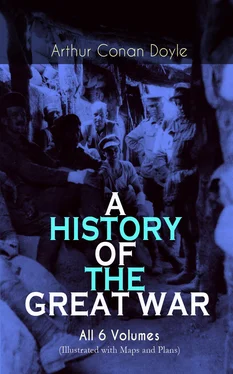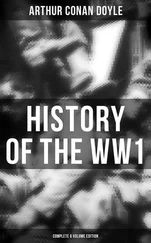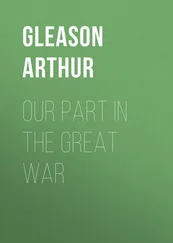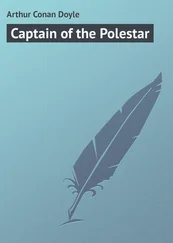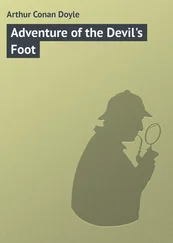The crossing was safely effected. It has always been the traditional privilege of the British public to grumble at their public servants and to speak of “muddling through” to victory. No doubt the criticism has often been deserved. But on this occasion the supervising General in command, the British War Office, and the Naval Transport Department all rose to a supreme degree of excellence in their arrangements. So too did the Railway Companies concerned. The details were meticulously correct. Without the loss of man, horse, or gun, the soldiers who had seen the sun set in Hampshire saw it rise in Picardy or in Normandy. Boulogne and Havre were the chief ports of disembarkation, but many, including the cavalry, went up the Seine and came ashore at Rouen. The soldiers everywhere received a rapturous welcome from the populace, which they returned by a cheerful sobriety of behaviour. The admirable precepts as to wine and women set forth in Lord Kitchener’s parting orders to the Army seem to have been most scrupulously observed. It is no slight upon the gallantry of France—the very home of gallantry —if it be said that she profited greatly at this strained, over-anxious time by the arrival of these boisterous over-sea Allies. The tradition of British solemnity has been for ever killed by these jovial invaders. It is probable that the beautiful tune, and even the paltry words of “Tipperary,” will pass into history as the marching song, and often the death-dirge, of that gallant host. The dusty, poplar-lined roads resounded with their choruses, and the quiet Picardy villages re-echoed their thunderous and superfluous assurances as to the state of their hearts. All France broke into a smile at the sight of them, and it was at a moment when a smile meant much to France.
Whilst the various brigades were with some deliberation preparing for an advance up-country, there arrived at the Gare du Nord in Paris a single traveller who may be said to have been the most welcome British visitor who ever set foot in the city. He was a short, thick man, tanned by an outdoor life, a solid, impassive personality with a strong, good-humoured face, the forehead of a thinker above it, and the jaw of an obstinate fighter below. Overhung brows shaded a pair of keen grey eyes, while the strong, set mouth was partly concealed by a grizzled moustache. Such was John French, leader of cavalry in Africa and now Field-Marshal commanding the Expeditionary Forces of Britain. His defence of Colesberg at a critical period when he bluffed the superior Boer forces, his dashing relief of Kimberley, and especially the gallant way in which he had thrown his exhausted cavalry across the path of Cronje’s army in order to hold it while Roberts pinned it down at Paardeberg, were all exploits which were fresh in the public mind, and gave the soldiers confidence in their leader.
French might well appreciate the qualities of his immediate subordinates. Both of his army corps and his cavalry division were in good hands. Haig, like his leader, was a cavalry man by education, though now entrusted with the command of the First Army Corps, and destined for an ever-increasing European reputation. Fifty-four years of age, he still preserved all his natural energies, whilst he had behind him long years of varied military experience, including both the Soudanese and the South African campaigns, in both of which he had gained high distinction. He had the advantage of thoroughly understanding the mind of his commander, as he had worked under him as Chief of the Staff in his remarkable operations round Colesberg in those gloomy days which opened the Boer War.
The Second Army Corps sustained a severe loss before ever it reached the field of action, for its commander, General Grierson, died suddenly of heart failure in the train between Havre and Rouen upon August 18. Grierson had been for many years Military Attaché in Berlin, and one can well imagine how often he had longed to measure British soldiers against the self-sufficient critics around him. At the very last moment the ambition of his lifetime was denied him. His place, however, was worthily filled by General Smith-Dorrien, another South African veteran whose brigade in that difficult campaign had been recognised as one of the very best. Smith-Dorrien was a typical Imperial soldier in the world-wide character of his service, for he had followed the flag, and occasionally preceded it, in Zululand, Egypt, the Soudan, Chitral, and the Tirah before the campaign against the Boers. A sportsman as well as a soldier, he had very particularly won the affections of the Aldershot division by his system of trusting to their honour rather than to compulsion in matters of discipline. It was seldom indeed that his confidence was abused.
Haig and Smith-Dorrien were the two generals upon whom the immediate operations were to devolve, for the Third Army Corps was late, through no fault of its own, in coming into line. There remained the Cavalry Division commanded by General Allenby, who was a column leader in that great class for mounted tactics held in South Africa a dozen years before. It is remarkable that of the four leaders in the initial operations of the German War — French, Smith-Dorrien, Haig, and Allenby—three belonged to the cavalry, an arm which has usually been regarded as active and ornamental rather than intellectual. Pulteney, the commander of the Third Army Corps, was a product of the Guards, a veteran of much service and a well-known heavy-game shot. Thus, neither of the more learned corps were represented among the higher commanders upon the actual field of battle, but brooding over the whole operations was the steadfast, untiring brain of Joffre, whilst across the water the silent Kitchener, remorseless as Destiny, moved the forces of the Empire to the front. The last word in each case lay with the sappers.
The general plan of campaign was naturally in the hands of General Joffre, since he was in command of far the greater portion of the Allied Force. It has been admitted in France that the original dispositions might be open to criticism, since a number of the French troops had engaged themselves in Alsace and Lorraine, to the weakening of the line of battle in the north, where the fate of Paris was to be decided. It is small profit to a nation to injure its rival ever so grievously in the toe when it is itself in imminent danger of being stabbed to the heart. A further change in plan had been caused by the intense sympathy felt both by the French and the British for the gallant Belgians, who had done so much and gained so many valuable days for the Allies. It was felt that it would be unchivalrous not to advance and do what was possible to relieve the intolerable pressure which was crushing them. It was resolved, therefore, to abandon the plan which had been formed, by which the Germans should be led as far as possible from their base, and to attack them at once. For this purpose the French Army changed its whole dispositions, which had been formed on the idea of an attack from the east, and advanced over the Belgian frontier, getting into touch with the enemy at Namur and Charleroi, so as to secure the passages of the Sambre. It was in fulfilling its part as the left of the Allied line that on August 18 and 19 the British troops began to move northwards into Belgium. The First Army Corps advanced through Le Nouvion, St. Remy, and Maubeuge to Kouveroy, which is a village upon the Mons-Chimay road. There it linked on to the right of the Second Corps, which had moved up to the line of the Condé-Mons Canal. On the morning of Sunday, August 23, all these troops were in position. The 5th Brigade of Cavalry (Chetwode’s) lay out upon the right front at Binche, but the remainder of the cavalry was brought to a point about five miles behind the centre of the line, so as to be able to reinforce either flank. The first blood of the land campaign had been drawn upon August 22 outside Soignies, when a reconnoitring squadron of the 4th Dragoon Guards under Captain Hornby charged and overthrew a body of the 4th German Cuirassiers, bringing back some prisoners. The 20th Hussars had enjoyed a similar experience. It was a small but happy omen.
Читать дальше
